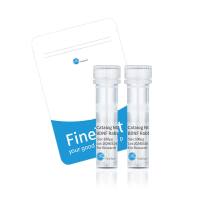Large Scale Identification of Genes Involved in PlantFungal Interactions Using Illuminas Sequencing-by-Synthesis Technology
互联网
互联网
相关产品推荐

Ni Sepharose™ 6 Fast Flow - Scale-up Purifi(PH-9)-2ml体积/5ml体积
¥1600

Recombinant-Saccharomyces-cerevisiae-3-hydroxyacyl-CoA-dehydratase-PHS1PHS13-hydroxyacyl-CoA dehydratase PHS1; HACD EC= 4.2.1.- Alternative name(s): PTPLA homolog involved in sphingolipid biosynthesis protein 1
¥10710

Recombinant-Arabidopsis-thaliana-Protein-CPR-5CPR5Protein CPR-5 Alternative name(s): Protein constitutive expression of pathogenesis-related genes 5; Protein constitutive expression of PR genes 5 Protein hypersenescence-1
¥13790

LARGE1 antibody|LARGE1抗体
¥1140

Recombinant-Salmonella-paratyphi-A-Cellulose-synthesis-regulatory-proteinSPA0883Cellulose synthesis regulatory protein
¥13846
相关问答

